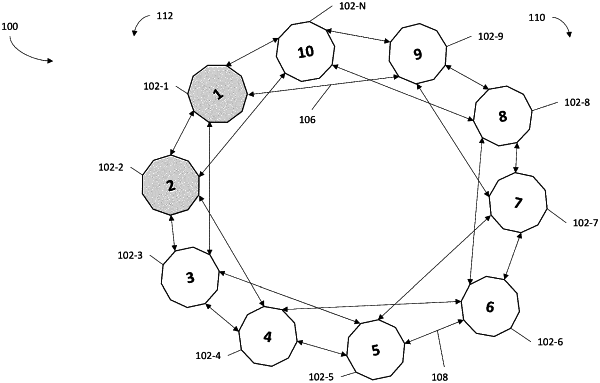| CPC H04L 49/557 (2013.01) [H04L 45/16 (2013.01); H04L 49/102 (2013.01); H04L 49/30 (2013.01); H04L 49/552 (2013.01); H04L 49/555 (2013.01)] | 20 Claims |

|
1. A network comprising:
a plurality of nodes; and
a plurality of communication links communicatively coupling each of the plurality of nodes to at least one respective adjacent node of the plurality of nodes via a first communication path in a first direction and to another respective adjacent node of the plurality of nodes via a second communication path in a second direction;
wherein a first node and a second node of the plurality of nodes are configured to form a self-checking pair, wherein the first node and the second node are adjacent nodes or separated by a single node;
wherein the first node of the plurality of nodes is configured to:
send a first message in the first direction via a first side of the first node, wherein the first message includes a first destination address that corresponds to a second side of the first node opposite the first side of the first node;
send a second message in the second direction via the second side of the first node, wherein the second message includes a second destination address that corresponds to the first side of the first node;
wherein the second node of the plurality of nodes is configured to:
send a third message in the first direction via a first side of the second node, wherein the third message includes a third destination address that corresponds to a second side of the second node opposite the first side of the second node;
send a fourth message in the second direction via the second side of the second node, wherein the fourth message includes a fourth destination address that corresponds to the first side of the second node.
|